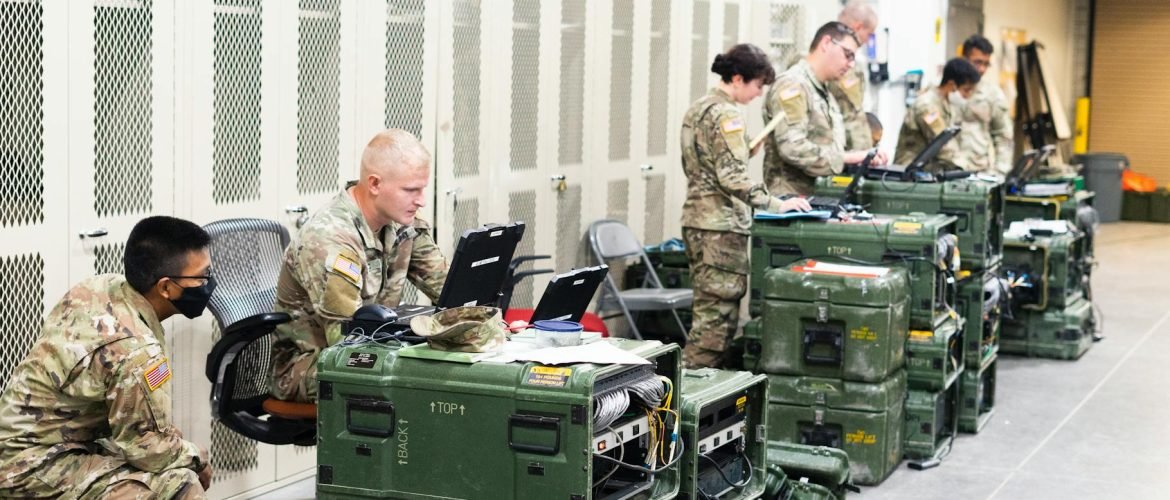Security Standards for Wi-Fi Networks
Understanding security standards is a must if you want to set up a safe and sound Wi-Fi network at home or work. Let’s take a look at the old-school and the latest encryption methods.
Legacy Encryption Protocols
Remember trying to keep a secret that’s so old everyone knows it? That’s kind of what legacy encryption protocols are like. They were groundbreaking back in the day but are now as secure as a cardboard lock.
WEP (Wired Equivalent Privacy)
Way back in 1997, WEP was the go-to for securing your Wi-Fi. But it used this thing called RC4 encryption and a shared key that seemed more like an open invitation for hackers. Unsurprisingly, it didn’t take long before WEP was tossed aside as useless (eSecurity Planet).
| Protocol | Year Developed | Encryption | Vulnerabilities |
|---|---|---|---|
| WEP | 1997 | RC4 | Easily broken, not secure |
WPA (Wi-Fi Protected Access)
Fed up with WEP’s shortcomings, tech whizzes cooked up WPA. This version threw in the Temporal Key Integrity Protocol (TKIP) and a more dynamic 128-bit key. Still, like trying to put a lock on a screen door, it had holes (SecureW2).
| Protocol | Year Developed | Encryption | Vulnerabilities |
|---|---|---|---|
| WPA | 2003 | TKIP, RC4 | Better than WEP, but not foolproof |
Modern Encryption Standards
Now we’re talking. Modern standards pack a punch with fancier tech to fend off the bad guys and keep your Wi-Fi fortress strong.
WPA2 (Wi-Fi Protected Access II)
Enter WPA2 in 2004, rocking AES encryption that’s tough as nails. It’s the go-to choice for many because it handles threats like a pro. Though it’s not all sunshine and rainbows since KRACK attacks can still sneak in, especially in business settings (eSecurity Planet).
| Protocol | Year Developed | Encryption | Security Features |
|---|---|---|---|
| WPA2 | 2004 | AES | Strong protection, popular choice |
WPA3 (Wi-Fi Protected Access III)
In came WPA3 in 2018, ready to up the ante with better encryption and armor against brute force attacks. Plus, it came with Wi-Fi Easy Connect, making life simpler. Still, some folks hesitate to switch due to compatibility gripes with the old gadgets (eSecurity Planet).
| Protocol | Year Developed | Encryption | Security Features |
|---|---|---|---|
| WPA3 | 2018 | Enhanced AES | Tougher shield, staves off forceful attacks |
Choosing the right protection for your Wi-Fi setup is super important. If you’re scratching your head about picking the right gear, check out our guide on the best wireless routers.
Setting Up a Secure Wi-Fi Network
Keeping your Wi-Fi secure is like locking your front door—it’s a no-brainer for keeping your personal info safe and enjoying a smooth internet ride. Here’s the lowdown on getting your wireless network locked down.
Wireless Router Configuration
Setting up your router right is the kick-off to a secure Wi-Fi network. Most routers can be accessed using a web browser at IP addresses like 192.168.1.1 or 192.168.0.1 (NordVPN). Here’s what to do:
-
Access the Router’s Web Interface:
- Fire up a web browser.
- Type in your router’s IP in the address bar.
- Log in with the default username and password provided.
-
Change Default Login Credentials:
- Head to the administration settings.
- Swap out the default admin password for something unique and sturdy.
-
Set Network Name (SSID):
- Hit the wireless settings.
- Go for a unique SSID, but steer clear of personal details.
-
Disable SSID Broadcasting (Optional):
- Turn off SSID broadcasting to keep it less visible. Bonus security point!
Want the full scoop? Check out our wireless network solutions.
Choosing the Right Security Protocol
Picking the right security protocol means keeping freeloaders out of your network.
| Security Protocol | Description | Strength |
|---|---|---|
| WEP | Dusty and easy to crack | Weak |
| WPA | Better than WEP with TKIP and 128-bit keys | Moderate |
| WPA2-PSK | Uses CCMP, perfect for homes | Strong |
| WPA2-Enterprise | RADIUS server and 802.1X make it rock-solid | Very Strong |
For home use, aim for WPA2-PSK. It’s like giving your network a secret handshake. In the workplace, go with WPA2-Enterprise if you can.
Here’s how to choose and set your protocol:
-
Find Wireless Security Settings:
- Dig into the security options on the router’s interface.
-
Pick WPA2-PSK:
- Select it and come up with a tough passphrase.
-
Save and Apply Settings:
- Lock in your changes and give the router a reboot if needed.
Check out best wireless routers for more picks.
Implementing Strong Passwords
Crucial for keeping the Wi-Fi hijackers at bay is nailing your passwords:
-
Make a Tough Admin Password:
- Shoot for 12-16 characters, mixing letters, numbers, and symbols.
-
Secure Your Wi-Fi Password:
- Ditch the usual suspects. Blend uppercase, lowercase, numbers, and symbols.
-
Switch Up Your Wi-Fi Password Often:
- Fresh passwords every 6-12 months keep things tight.
| Parameter | Recommended Value |
|---|---|
| Length | 12-16 characters |
| Complexity | Upper, lower, numbers, special symbols |
| Change Frequency | Every 6-12 months |
To swap your Wi-Fi password, log into the router via 192.168.1.1 or 192.168.0.1 and head for the wireless settings (NordVPN).
For more nuggets of wisdom, check our piece on best practices for secure Wi-Fi networking.
Troubleshooting Wi-Fi Connectivity
Getting your Wi-Fi running smoothly is just the start. Sometimes, you stumble upon hiccups that mess with your connection. Let’s pick apart the usual culprits, easy-peasy quick-fix tools, and those head-scratching troubleshooting tips so your Wi-Fi can work without a hitch.
Common Network Issues
Before you pull your hair out over Wi-Fi woes, let’s chat about typical problems that might mess up your network. Here’s the scoop:
- Weak Signal: Thick walls, long distances from your router, or even gadgets like microwaves can put a damper on your Wi-Fi.
- IP Address Conflict: Got devices fighting over the same IP address? That’s a recipe for a connection mess.
- Outdated Firmware: Keeping your router’s brain (firmware) sharp is key. Old firmware can leave your network struggling or vulnerable.
- Channel Interference: Neighbour’s Wi-Fi crashing your party? Networks on the same channel can bog down your speeds.
Basic Network Diagnostic Tools
For quick Wi-Fi troubleshooting, some simple tools can help straighten things out quick as a flash.
-
Windows Network Diagnostics: A nifty built-in tool that checks your internet connection problems. It runs tests and dishes out possible fixes to sort it all out. Wanna know more? Head over to Electric.
-
Network Commands: Make friends with your command prompt. It’s not as geeky as it sounds:
netsh int ip reset: Freshens up your TCP/IP settings.ipconfig /releaseandipconfig /renew: Sets your IP address straight.ipconfig /flushdns: Clears any messy DNS cache leftovers.
| Command | Description |
|---|---|
netsh int ip reset |
Gives the TCP/IP stack a restart. |
ipconfig /release |
Lets go of the current IP address. |
ipconfig /renew |
Snags a new IP address. |
ipconfig /flushdns |
Cleans out the DNS cache. |
- Ping Test: A quick ping to the default gateway can help sniff out problems. If the router chats back, check your modem or ISP. Silence? The router might be the bad guy. More help? Peek at Microsoft Support.
Advanced Troubleshooting Techniques
For trickier issues, these tactics might just save the day:
-
Firmware Updates: Get your router’s firmware up to speed. Updates often bring better performance and security. Check for updates through your router settings.
-
Driver Updates: If Windows updates have thrown a wrench in your network gears, updating your network adapter’s driver can smooth things over. Hit up Device Manager for this, or backtrack a Windows update if you must. Check Microsoft Support for further tips.
-
Changing Wi-Fi Channels: Get a Wi-Fi analyzer app to find less crowded channels and adjust your router accordingly. Fewer busybodies on your network equals better performance.
-
Router Placement: Moving your router to a spot that’s central, high up, and clutter-free can give your signal a boost.
Need more Wi-Fi wisdom? See our articles on wireless networking technologies and best wireless routers for the whole scoop on beefing up your network.
Enhancing Wi-Fi Security Measures
Locking down your Wi-Fi is all about keeping your data safe and sound, so you can browse with peace of mind. Let’s explore a few cool tricks to tighten your network’s security.
Taking Advantage of Your Router’s Extras
These days, routers aren’t just boxes with blinking lights—they come with some hidden goodies to amp up security. Think firewalls, guest networks, and those nifty MAC address filters.
| Security Feature | What’s It Do? |
|---|---|
| Firewall | Puts up a protective shield between your home and the nasty stuff out there. |
| Guest Networks | Lets visitors surf on a separate wave, keeping your main connection off-limits. |
| MAC Address Filtering | Picks and chooses which gadgets get the Wi-Fi golden ticket. |
For a deeper dive into these features, check out Microsoft’s support page.
Keeping Your Router’s Brain Up-to-Date
Updating your router’s firmware is like giving it a brain boost—it helps tackle bugs and stays ahead of hackers. Manufacturers drop updates and fixes pretty regularly, so best to stay on top of them.
| What’s Happening | Why Bother? |
|---|---|
| Firmware Updates | Squashes bugs and speeds up your Wi-Fi wizard. |
| Security Patches | Shuts down hacker backdoors quicker than you can say “password”. |
For breaking news on updates, peek at eSecurity Planet.
Smart Moves for Secure Wi-Fi
Want to keep your Wi-Fi fortress tight? Here’s a few golden rules: change those factory passwords, turn on WPA3 encryption, and make sure to snoop around your network regularly for trouble.
| Smart Move | What It Does |
|---|---|
| Change Default Credentials | Keeps nosy neighbours from messing with your settings. |
| Enable WPA3 Encryption | Boosts your defences with top-of-the-line encryption. |
| Regular Network Audits | Spots and seals any weak spots in your network. |
For more juicy tips on safeguarding your connection, swing by our page on wireless network solutions.
By making these small tweaks, you can crank up your network’s security and keep your online escapades safe and sound. If you’re curious about picking the best router or choosing between Wi-Fi and Ethernet, pop over to our sections on best wireless routers and the lowdown on wi-fi vs ethernet connections.




